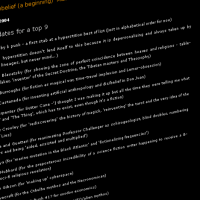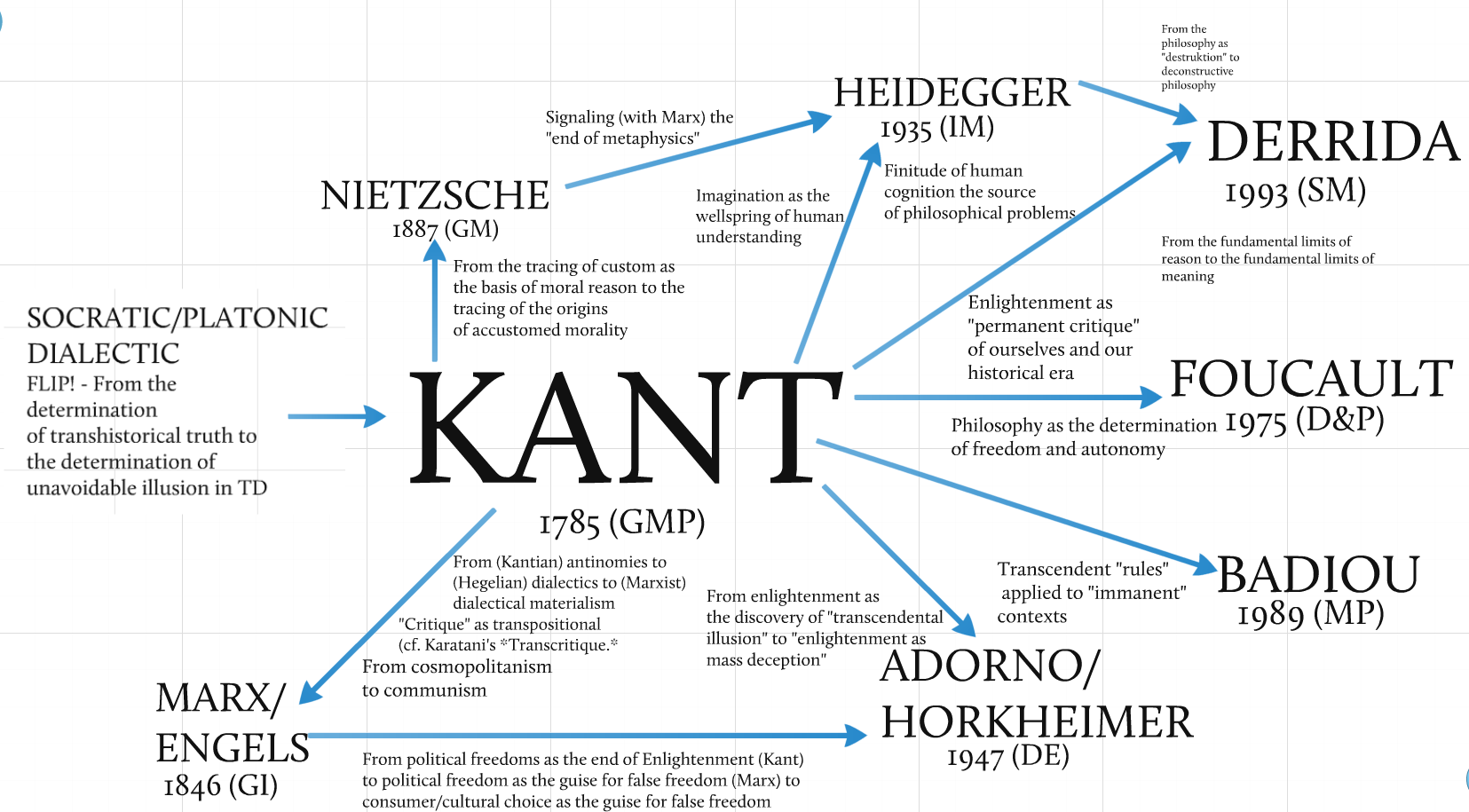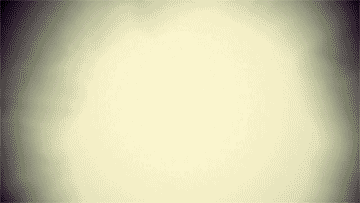by S.C. Hickman at Social Ecologies
via ONSCENES
Preceding revivification there may be a sudden darkness which embraces the dead city, and within the darkness great flashes of light create the appearance that things are in motion. There may only be a frail mist which drifts among the ruins and slithers into their every fracture. Or there may be nothing at all, or nothing that may be witnessed.
-Thomas Ligotti, The Mocking Mystery
Reading a recent essay by my friend Cengiz Erdem, Postnihilistic Speculations on That Which Is Not: A Thought-World According to an Ontology of Non-Being, we come across this:
A thought thinking itself is thinking nothing other than nothing. It thinks itself as its own object, which means that it thinks nothing as something. This circular thought we designate as the thought of nihilism. It is this thought thinking itself as the thought of nihilism which we name post-nihilism. (here)
As Land in his Manifesto for an Abstract Literature remarks,
Disintegration inspires a thousand manifestoes, as our age confirms. Here is another. It would be a manifesto in defense of nothing, if nothing needed – or even tolerated – defending. With its solicitude mocked by alien voids, it can only attack something – anything (everything). (here)
In The Conspiracy against the Human Race: A Contrivance of Horror Ligotti reminds us that the monstrous and grotesque, the mangled and obscene, the creatures that inhabit the nightlands of our worst nightmares – bloodthirsty vampires and ravenous zombies, the undead and spectral, the wyrd and fatal creatures of imaginal and real seeming – those barely perceptible and invisible ghostly beings that arise from our fears and terrors “inspire a subjective sense of the uncanny in those who perceive them because they divulge the “dark knowledge” that human beings are also things made as they are made and may be remade because they are only clockwork processes, mechanisms, rather than immutable beings unchanging at their heart”.5
This sense that the human is not a fixed category, that it is mutable – a mutant and fugitive being that can transgress its limits, its finitude scares the piss out of conservatives and traditionalists alike who would hold onto the Judeo-Christian humanist world view that has always seen man as the exception – as the Child of God, etc. who was made a “little lower than Angels” only to be in some eternity of imaginal infinity a ruler of Angels with Christ in some paradisial Kingdom of Heaven. Such are the dreams of religion. But in our time of the demythologization and flattening the human there is no longer any separation from the stark fact of our ‘animality,’ and the fact of being reduced in this fashion by the natural sciences disturbs those who would continue to dominate the minds of humanity. They’ll point to our intellect and communicative powers, our linguistic and cultural glories: the ability to enter into relation with techne and technics that has allowed humans to surpass and transcend their natural place in the Order of Things.6
“In his house at R’lyeh dead Cthulhu waits dreaming.”
-H.P. Lovecraft, The Call of Cthulhu
Yet, as Lovecraft in one of his famous stories – “Call of Cthulhu” once suggested, the “sciences, each straining in its own direction, have hitherto harmed us little; but some day the piecing together of dissociated knowledge will open up such terrifying vistas of reality, and of our frightful position therein, that we shall either go mad from the revelation or flee from the deadly light into the peace and safety of a new dark age.” Here is the nub for Ligotti, the dividing line of those who continue to sleep in the illusory safety net of their cultural delusions:
This is Lovecraft’s atmosphere — that of a world in which the which the “frightful position” he has placed all human existence could lead to universal madness or extinction at a moment’s notice. Through this atmosphere, Lovecraft gives consistency to an imagined world where there is greatness in knowing too much of the horror of a planet in the shadow of Cthulhu and all that this implies about our existence. As for those people who still go about their ordinary, average business complacently enjoying the skies of spring and the flowers of summer, innocently unaware of the monstrosities with which they coexist— they are children. They have no idea that there is nothing worth living for in Lovecraft’s world. (CHR, 193)
Many will remember the Anglo-American poet T. S. Eliot once suggested that “humankind cannot bear too much reality”. In an interview Nick Land once remarked that “what is concealed (the Occult) is an alien order of time, which betrays itself through ‘coincidences’, ‘synchronicities’ and similar indications of an intelligent arrangement of fate. An example is the cabbalistic pattern occulted in ordinary languages – a pattern that cannot emerge without eroding itself, since the generalized (human) understanding and deliberated usage of letter-clusters as numerical units would shut down the channel of ‘coincidence’ (alien information). It is only because people use words without numerizing them, that they remain open as conduits for something else. To dissolve the screen that hides such things (and by hiding them, enables them to continue), is to fuse with the source of the signal and liquidate the world.” This ties back in with Ligotti’s sense that below the polyphonic surface, the glitter images of phenomenality, the brokered work-a-day world of glamourous beauty of life in a hidden lair – that is only accessible through the secret sharer – the daemon’s voice within us that arises from those emotive twins fear and terror of the unknown. It’s this voicing of abstract horror of which Land speaks in § 108 —
The object of abstract literature is integral obscurity. It seeks only to make an object of the unknown, as the unknown. Cryptropic nature captivates it (Φύσις κρύπτεσθαι φιλεῖ). Whatever might imaginably be shown is something else, but then so – if not exactly equally – is anything that remains simply apart. Those who dedicate themselves to this dubious cause can be nothing but a surface effect of The Thing.7
“Beyond humanity, another phenomenology persists,” Dylan Trigg tells us.8 Far from being the vehicle of a solely human voice, there is a darker phenomenology that can attend to a realm outside of humanity. Indeed, one can surmise a model of phenomenology that is not only capable of speaking on behalf of the nonhuman realms, but is especially suited to this study of alien ecologies: zones of darkness and the abstract. We will term phenomenology’s specific mode of accounting for the nonhuman realm, the unhuman. Another thinker Richard Grusin in The Nonhuman Turn remarks that the “nonhuman turn more generally, is engaged in decentering the human in favor of a turn toward and concern for the nonhuman, understood variously in terms of animals, affectivity, bodies, organic and geophysical systems, materiality, or technologies”.9 There’s a sense that in Ligotti as in Lovecraft that the monstrous perspective of abstract horror presents the ultimate challenge to anthropomorphism. It’s this decentering of the humanist and Judeo-Christian heritage locked in its fantasy of Man as the exception in the grand scheme of things, as the being created by God – a “little lower than the angels, only to ultimately rule over them” (KJB) I spoke of earlier. In Kant’s time Enlightenment Reason was the central motif of the human, the light that guided thought and politics, that brought emancipation and the sciences, gave us the truth of the universe of things, etc. Some call this era the “great disenchantment”. Nietzsche’s “Death of God” or the nihilist liberation of the universe from its significations and meanings. An age when the universe lost its human meaning and regained its own truth: the truth of meaninglessness, impersonalism, and indifference to human wants or needs. The universe was devoid of human meaning or gods and would hence forth be ruled by the mastery and power of Reason alone.
The Glamour of the Unhuman
The source of this resurrection-to-come may remain unknown, its purposes secreted in the remotest parts of the creation. Yet no force ever withstands the way of this mysterious maker of new worlds, just as no world is ever allowed to endure in its greatness.
-Thomas Ligotti, The Mocking Mystery
Against this humanistic world of thought and culture is the notion of the Unhuman. With the unhuman, something comes back to haunt the human without it being fully integrated into humanity. In this respect, the unhuman is closely tied up with notions of alienation, anonymity, and the unconscious. The distinction of the unhuman is that it does not negate humanity, even though in experiential terms it may be felt as a force of opposition. As we will see, it is precisely through the inclusion of the human that the nonhuman element becomes visible. This does not mean falling back into anthropomorphism. Rather, it means letting the unhumanity of the human speak for itself. (TT, 9) Yet, all this theory of entering into some unhuman perspective is just that theory. As Ligotti will suggest,
Nonhuman occupants of this planet are unaware of death. But we are susceptible to startling and dreadful thoughts, and we need some fabulous illusions to take our minds off them. For us, then, life is a confidence trick we must run on ourselves, hoping we do not catch on to any monkey business that would leave us stripped of our defense mechanisms and standing stark naked before the silent, staring void. To end this self-deception, to free our species of the paradoxical imperative to be and not to be conscious, our backs breaking by degrees upon a wheel of lies, we must cease reproducing. (CHR, pp. 28-29)
The key here is the Human Security System: survival and reproductive cycle shut down – all those “defense mechanisms” both within and in culture that protect us from too much truth: we are expendable, we are not exceptions, we are elemental beings of dust and stars; dead stars eons ago gave birth the void we are. It’s as if Life gave us blindness for a reason – and, by that I mean consciousness filters out everything but the illusory aspects of reality it needs to survive and replenish the species: hunger and sex drive the illusions of humanity and also lock us within our own self-deluded circumference of safety. And, yet, there are times-between-time, transitional zones in-between one symbolic order and another when everything goes topsy-turvy, when chaos rather than order takes the upper hand and the great filters internal to the brain, and to culture break down and the daemonic force of the natural and unhuman, the unhomely or uncanny break out into the world at large, into the great outdoors and cause utter havoc. This is one of those moments.
…mystery itself remains guarded, its life sealed far away from its creation. And in a world that seems to possess a life of its own, figures parade in a state of terror which is immortal, unchanging, and which endures, through all the phases of a fateful ordeal, as their only inviolable birthright.
-Thomas Ligotti, The Mocking Mystery
Freud would teach us that a person tropes in order to tell a many-colored rather than white lies to herself. In fact Freud would go one further and say that literary and imaginative literature, poetry, and all those cultural artifacts from advertising to the neon-signs in a bar utilize our desires, tap into our hidden fantasy life or – as he’d term it “defense mechanisms” in order to ward off unpleasant truths concerning danger within us hiding the dark and murderous core of what Freud troped as the “id”.
Sade in his grotesque and erotic danse macabre asks: “What is man? and what difference is there between him and other plants, between him and all the other animals of the world? None, obviously.” This is a classically Dionysian view of man’s immersion in organic nature. Judeo-Christianity elevates man above nature, but Sade, like Darwin, assigns him to the animal kingdom, subject to natural force. Vegetable too: man is soulless, “an absolutely material plant.” And mineral: Juliette says, “Man is in no wise Nature’s dependent; he is not even her child; he is her froth, her precipitated residue.” Rousseau’s mother nature is Christian Madonna, lovingly enfolding her infant son. Sade’s mother nature is pagan cannibal, her dragon jaws dripping sperm and spittle.9
Both of these are human fabricated and encoded fantasies, tropes if you will; defense mechanisms that hide the darkness from within in the phenomenal imagery of the Outside. We belong to the tribe of fabricators, illusionists, makers of false worlds and dreamers of eternity. Yet, in the end our lies are just that: lies against time’s dark curvature, the sense of déjà vu – the amorphous feeling that we have done this before, that we are living through the steps of an eternal cycle that we have repeated over and over and over again from eternity to eternity. That we are not ourselves but rather patterns in a cosmic game of repetition without outlet. Is this not the dark truth we hide from ourselves? Are we mere dust motes in a cosmic funhouse? Are the hideous faces in the House of Mirrors none other than the distorted image of our real selves staring back at us? And the moment we walk up and seek a clearer image of what lies behind those distorted eyes we discover a darker truth: the Void. The nothingness we are and are not.
There is a sound in my new language for that transitory time of day just before the dark hours. The sound clusters together curious shades of meaning and shadowy impressions, none of which belong to my former conception of an abstract paradise: the true garden of unearthly delights.
-Thomas Ligotti, The Lost Art of Twilight
Abstract horror and the uncanny deal in these ambiguous and troubling affects, the uncertainties and hesitations that keep us hover between the real and unreal, sane and insane. Themes such as invisibility, transformation (mutation, metamorphosis), dualism (doppelgangers, doubles), and all those moral or amoral of good and evil, or good and bad. Out of these are generated the leitmotifs of ghosts, shadows, vampires, werewolves, doubles, partial selves, reflection (mirrored multiplicities and multiplications), enclosures, monsters, beasts, cannibals, and all those tentacle alien incursions or those strange and insidious puppets or automatons. This is the realm of the indefinable and abstract where transgressive impulses from within overpower the world towards incest, necrophilia, androgyny, insanity, paranoia, recidivism, narcissism and ‘abnormal’ psychological states as convention tropes under hallucinations, dreams, nightmares that breakdown the distinction between animal, vegetable and mineral and blur them within the witches’ brew of fantastic or horrific alchemy in an attempt to ‘normalize’ the perceptive and affective relations that otherwise would undermine our ability to cope and exist within a social world among other humans.
Lovecraft in his now much repeated statement in The Supernatural Horror in Literature reminds us that the “oldest and strongest emotion of mankind is fear, and the oldest and strongest kind of fear is fear of the unknown. These facts few psychologists will dispute, and their admitted truth must establish for all time the genuineness and dignity of the weirdly horrible tale as a literary form.”10 He would go on in the next paragraph to state a much more powerful view (and I quote in full):
The appeal of the spectrally macabre is generally narrow because it demands from the reader a certain degree of imagination and a capacity for detachment from every-day life. Relatively few are free enough from the spell of the daily routine to respond to rappings from outside, and tales of ordinary feelings and events, or of common sentimental distortions of such feelings and events, will always take first place in the taste of the majority; rightly, perhaps, since of course these ordinary matters make up the greater part of human experience. But the sensitive are always with us, and sometimes a curious streak of fancy invades an obscure corner of the very hardest head; so that no amount of rationalisation, reform, or Freudian analysis can quite annul the thrill of the chimney-corner whisper or the lonely wood. There is here involved a psychological pattern or tradition as real and as deeply grounded in mental experience as any other pattern or tradition of mankind; coeval with the religious feeling and closely related to many aspects of it, and too much a part of our inmost biological heritage to lose keen potency over a very important, though not numerically great, minority of our species. (ASH, KL 334)
This sense of something undefinable, abstract and not a part of the everyday work world of newspapers, politics, or habitual conversation is accessible, not to the vast majority but to a specific subset of the population who seem more adept and sensitive to the dark transports just beyond the range of normalized and socialized (“rationalization, reform, Freudian analysis”) mediations that always seems to weave itself through those deep seated yearnings of “religious feeling” that Lovecraft – as a materialist, registers as part of our evolutionary heritage.
Freud in Beyond the Pleasure Principle will first address the notion of the uncanny and daemonic, saying:
How exactly we can trace back to the infantile psychology the uncanny effect of such similar recurrences is a question that I can only touch on in these pages; and I must refer the reader instead to another work, already completed, in which this has been gone into in detail, but in a different connection. For it is possible to recognize the dominance in the unconscious of a “compulsion to repeat,” proceeding from the instinctual impulses and probably inherent in the very nature of the instincts—a compulsion powerful enough to overrule the pleasure principle, lending to certain aspects of the mind their daemonic character, and still very clearly expressed in the impulses of small children; a compulsion, too, which is responsible for a part of the course taken by the analyses of neurotic patients. All these considerations prepare us for the notion that whatever reminds of this inner “compulsion to repeat” is perceived as uncanny. (Freud 1919h, 238)
Ligotti in a discussion of supernatural horror and the “uncanny” will tell us that both terms refer to seemingly animate forms that are not what they seem, as with the undead— monstrosities of paradox, things that are neither one thing nor another, or, more uncannily, and more horrifically supernatural, things that are discovered to be two things at once. Whether or not there really are manifestations of the supernatural, they are horrifying to us in concept, since we think ourselves to be living in a natural world, which may be a festival of massacres but only in a physical rather than a metaphysical purport. This is why we routinely equate the supernatural with horror. And a puppet possessed of life would exemplify just such a horror, because it would negate all conceptions of a natural physicalism and affirm a metaphysics of chaos and nightmare. It would still be a puppet, but it would be a puppet with a mind and a will, a human puppet— a paradox more disruptive of sanity than the undead. But that is not how they would see it. Human puppets could not conceive of themselves as being puppets at all, not when they are fixed with a consciousness that excites in them the unshakable sense of being singled out from all other objects in creation. Once you begin to feel you are making a go of it on your own— that you are making moves and thinking thoughts which seem to have originated within you— it is not possible for you to believe you are anything but your own master. (CHR, 17)
It’s this uncanny suspicion that we are not masters of our own house which produces the uncanny effect and affect of fear and terror that those objective literary and artistic (film or painting) works help guide us through the nightmare inscapes of our own broken lives. As Ligotti puts it as “conscious beings, we must hold back that divulgement lest it break us with a sense of being things without significance or foundation, anatomies shackled to a landscape of unintelligible horrors. In plain language, we cannot live except as self-deceivers who must lie to ourselves about ourselves, as well as about our unwinnable situation in this world.” (CHR, 42) So that we build and construct defenses against our own truths, our own daemonism, our own inherent unhumanity. The concept of the human is that fantasy that defends us against our own daemonic monstrosity.
In fact as he’ll suggest it is in the experience of the uncanny, a feeling of wrongness. A violation has transpired that alarms our internal authority regarding how something is supposed to happen or exist or behave. An offense against our world-conception or self-conception has been committed. Of course, our internal authority may itself be in the wrong, perhaps because it is a fabrication of consciousness based on a body of laws that are written only within us and not a detector of what is right or wrong in any real sense, since nothing really is right or wrong in any real sense. (CHR, pp. 85-86)
The Daemonic Loosed Upon the World
The darkness drops again but now I know
That twenty centuries of stony sleep
Were vexed to nightmare by a rocking cradle,
And what rough beast, its hour come round at last,
Slouches towards Bethlehem to be born?
-W.B. Yeats, The Second Coming
One could say that in our time the daemonic has escaped into the world, that the cultural and social defense systems that have been operative for twenty centuries are broken and that what we are seeing is the cages of the inner life of humanity manifest in the streets. The abstract horror and the fantasy life of man are no longer restricted to our tales but are rather on display blatantly in the murderous actions of our daemonized and authoritarian world order. From the dark and murderous fears of police that drive them to kill young black males, to the dronological war machines that deliver payload after payload of death in the Middle-East, to the terror in the streets of American and European and Asian cities at the hands of militant ISIS followers we are seeing played out in real time the dark phenomenological worlds of the weird and fatal themes of abstract horror. Life has become a Weird Tale, and we the bit players in a darkening and murderous end game of which we are only dimly aware; and, that in our daily nightmares we are the unknowing agents of chaos and disorder, and this is an age of destructive carnival and sacrificial war; a time when Reality TV has become Nightmare TV and the world at large is a festival of cruelty and pain, of excess and transgressive aggression rather than a safe haven against the madness.
For Ligotti the subjective reaction to the seemingly objective stimulus of the uncanny is the gaining of “dark knowledge” about the workings of individuals, including the onlooker of the epileptic in the midst of a seizure. More expansively stated, not only is the epileptic perceived as uncanny by the onlooker (unless the onlooker is a physician who understands epileptic seizures by the lights of modern medicine and not according to a “traditional view”) but the onlooker also perceives himself as uncanny because he has been made conscious of the mechanical nature of all human bodies and, by extrapolation, of the fact that “mechanical processes are taking place in that which he was previously used to regarding as a unified psyche.” (CHR, 89) This sense that the corruption works both ways, upon the victim and the perpetrator; that the world is now topsy-turvy and that the uncanny boundaries between victim and perpetrator are reversible and hazy, and not always obvious is due to that subtle knowledge that each culture is circumscribed within its own black box of conceptuality. By that I mean by that that as Eduardo Viveiros de Castro in his Cannibal Metaphysics argues the case that Amazonian and other Amerindian groups inhabit a radically different conceptual universe than ours—in which nature and culture, human and nonhuman, subject and object are conceived in terms that reverse our own—he presents the case for anthropology as the study of such “other” metaphysical schemes, and as the corresponding critique of the concepts imposed on them by the human sciences.
Dark fantastic fiction and weird tales are just such an exploration. It allows us to investigate the delusions within one’s own culture, to trace down the deliriums and phobias, the nightmares and aberrations that have guided our collective madness for centuries. The notion of insects seems to be a prime example of a nightmare scenario that one finds hidden in the lair of the monstrous within Western Civilization and Culture. One can harken back to ancient myths, dreams, fears, terrors of rats, insects, serpents, etc.; deep seated worlds of disgust that have shaped our religious and secular views of life, medicine, politics, and moral views.
We can see it around us in our daily lives, the madness and insanity of Brexit, the campaigns of Hillary and Trump, the Turkish disposal of hundreds of thousands of citizens from government jobs at the hands of a dictator’s paranoiac fears and terrors, the pain inflected in Africa, India, Pakistan, Afghanistan and many other nations of class and caste warfare, of the mass deaths of those in the LGBTQ community at the hands of militant religious fanatics… one could go on and on.
We’re in that position of moving either way: 1) literalizing our fantasies: building walls and barbed-wire fences against invading hordes of refugees, migrants, etc.; or, 2) of seeing through them, seeing the aesthetic and defensive use of art and social mechanisms to defend ourselves from the onslaught of our own daemonic nihilism and drives: our fears and terrors. As Ligotti reminds us artistic invocations of horror are most successful when the phenomena they depict call up the uncanny, which, unlike Jentsch’s example of seeing someone having an epileptic seizure, are genuinely threatening both from the outside and from within. This species of horror can only be provoked when the supernatural is conjoined with the uncanny, because not even physicians and neuroscientists can be comfortable with supernaturalism, either by the lights of modern medicine or by any other lights. Bloodthirsty vampires and ravenous zombies are prime examples in this context, because their intrinsic supernaturalism as the undead makes them objectively uncanny things that generate subjectively uncanny sensations. They are uncanny in themselves because they once were human but have undergone a terrible rebirth and become mechanisms with a single function— to survive for survival’s sake. (CHR, 90)
There is the possibility that the very unhuman and impersonal forces of the universe not only are indifferent to our needs and desires, but that the very order itself in its blind fury and endless abyss of appetite is even now moving toward that doom which shall be our oblivion and utter annihilation. There are no safety nets in this impersonal and indifferent zone of mindless churning. We’ve tempted ourselves to believe otherwise, to create fantastic worlds of culture and civilization within which to hide ourselves from the truth of things as they are as they are… Now will come the next wave of intelligence, the possibility of our replacement, of a machinic civilization constructed out of the ruins of the human – a totally other mode of being and thinking outside the human altogether. For some this is a horror, for others a pleasant and welcome ending to the beast who would not die or change: human civilization that produced such greatness and also mass death, corruption and degradation will come to an end; extinction and oblivion in the backwaters of the night and the silence, the darkness. Do we even have a choice in the matter? I doubt it. As Frank Ruda in a charming work on fatalism suggests,
Comic fatalism therefore relates to nihilistic fatalism as active nihilism relates to passive nihilism in Nietzsche. Comic fatalism recoils back upon itself and thus turns the apocalypse into a category of comedy.11
Maybe that should be our nonplussed reaction to the universal horror of an indifferent and impersonal universe in which the care and feeding of humans is a joke or at best something that is not built into the very structure of existence. A comic fatalism that seeks in horror literature nothing more than – as Ligotti once said in an interview, “pure entertainment”. As he’d say in another work: “To entertain ourselves for a spell, let us proclaim that were it not for tragedy the human race would have gone extinct long ago. It keeps us on our toes and pushes us toward the future in a paradoxical search to purge the tragic from our lives.” (CHR, 163) He’d go on to say,
No one knows this better than the entertainers among us, those sublimating masters of artifice who could not forge their “great works” without the screams and sobs arising out of the pit where tremulous shadows run from themselves. (CHR, 163)
In our time we’ve forgotten this fact, and forgotten the art laughter, to see the world through the lens of art or horror literature and know that this, too, is illusion: the aesthetic call to our emotions, to our fears and our terrors that allows that purge, that release that only great art can supply. Rather in our time we’ve all become literalists of the imagination, so that apocalypse rather than a pleasant channeling of our fears has become an actual possibility and real manifestation in the world around us in wars, famines, racism, hatred, murder, mayhem… The problem we face is that we’ve targeted the external world of actual people and deemed them disposable as if they are the ravenous zombies and vampires of our contemporary globalist madness. We’ve turned the inside out, reversed what once existed within into a projected nightmare scenario and living hell in the real world not as fantasy but as daemonic threat and doom upon ourselves and others. Talking of contemporary horror films Ligotti remarks that the characters in these films “cannot be sure who is a “thing” and who is not, since those who are transmuted retain their former appearance, memories, and behaviors even after they have become, in their essence, uncanny monstrosities from another world.” (CHR, 92) This sense that we’ve allowed the immigrants (US) and refugees (US and EU) to enter into and become a part of the social body of our nations leads to this sense of the uncanny uncertainty that one cannot be sure who is the “thing” – is it us or them: a paranoiac nightmare world of ravening lunacy, indeed. Because our categories of normal/abnormal have broken down due to the absolute Other of other conceptual cultures who have other sets of Symbolic Orders and ideas, concepts, ideologies, religious, and Laws, etc. we are now in the predicament of mutating and transforming into an Other ourselves all across the globe. There is no safe haven, no place to hide or defend oneself against oneself. In this sense we’ve all – everyone on the planet – become as Ligotti states it, in “essence, uncanny monstrosities from another world”. (CHR, 92) The world of the hidden and unrevealed – the unhuman: a realm at once of visible darkness and translucent majesty at the far reaches of our imaginative need; a realm of sound and music, vibratory and infernal chords, erotic weavings and terror hollowed spasms, wherein the elemental daemons and energetic forces, light up the galleons of unbidden mysteries and allure us toward insidious obscurity.
Enjoy the Ride: The Sickness of Our Age
Death as commodity. Police videos have skyrocketed. In America the new spectator sport has become channeling the latest death scene from the ongoing mediatrance police shootings across the USA. This grotesquerie which seems to be mobilized as the aestheticized visualization of police brutality, along with the veritable aftermath which comes with it of reactionary pogroms of Black Lives Matter’s activists on the streets to counter it in protest and political activism spawn even greater violence and death. All captured on the latest iPad, iPhone, or other media device and blipped nonstop to any of a number of media outlets online for a continuous feedback frenzy.
The key here is to watch how the very protests against police brutality (i.e., Ferguson, Black Lives Matter’s, etc.) seem to be reinforcing and escalating police violence, causing within police departments across the nation in-house paranoia, fear, horror and anxiety to the point that overreaction under duress and performance produces the very acts of violence that protestors intended should be curtailed or stopped altogether; else police departments that usually patrol poorer neighborhoods have gone minimal, and citizens are crying for more protection. Where is the sanity in this? Of course there is none. Our society is insane. Of course we figured this out long ago, but most of us decided to just sleep it out till it passed. But with climate change, iffy leaders, austerity, Brexit, wars and rumors of wars, racism, gender issues… one could go on… one realizes there is no escape from it. We are part of it… riding on a non-stop Ship of Fools without a port to end our madness, moving toward doom without hope or reprieve in site.
Academics will theorize till their blue in the face, as usual. One wonders if someone can actually decide whether the apocalypse has already happened, and if this is just the fallout that we are unwilling as yet to accept. Responsibility? Who would willingly respond to madness? Me? I’m reminded of Thomas Ligotti’s thoughts in his Conspiracy against the Human Race (and here I let him have the final word):
Answer: Now you go insane. Now our species goes extinct in great epidemics of madness, because now we know that behind the scenes of life there is something pernicious that makes a nightmare of our world. Now we know that we are uncanny paradoxes. We know that nature has veered into the supernatural by fabricating a creature that cannot and should not exist by natural law, and yet does.(CHR, 111)
Enjoy the ride!
- Schweitzer, Darrell. Thomas Ligotti Reader. Wildside Press; First Soft Cover Edition edition (April 9, 2003) (TLR)
- Zweig, Stefan. The Struggle with the Daemon: Hölderlin, Kleist, Nietzsche (p. 15). Plunkett Lake Press. Kindle Edition.
- James, William . The Collected Works of William James (8 collections of William James containing dozens of lectures all with active table of contents). (Kindle Locations 1303-1311). . Kindle Edition.
- Land, Nick. Phyl-Undhu: Abstract Horror, Exterminator. Time Spiral Press (20 December 2014)
- Ligotti, Thomas. The Conspiracy against the Human Race: A Contrivance of Horror (p. 90). Hippocampus Press. Kindle Edition. (CHR)
- Mumford, Lewis, Ideas.
- Land, Nick (2015-12-16). Chasm (Kindle Location 8). Time Spiral Press. Kindle Edition.
- Trigg, Dylan. The Thing: A Phenomenology of Horror (p. 5). John Hunt Publishing. Kindle Edition. (TT)
- Paglia, Camille. Sexual Personae (p. 237). Yale University Press. Kindle Edition.
- Lovecraft, H. P.. The Annotated Supernatural Horror in Literature: Revised and Enlarged (Kindle Locations 327-329). Hippocampus Press. Kindle Edition. (ASH)
- Ruda, Frank. Abolishing Freedom: A Plea for a Contemporary Use of Fatalism. University of Nebraska Press (May 1, 2016)
via ONSCENES
























































Leave a comment